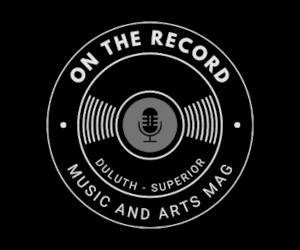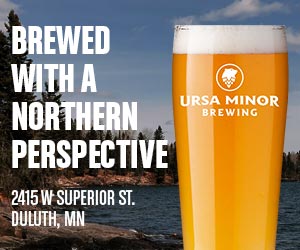Bee Gees

The Bee Gees, originally made up of three brothers: Barry Gibb, Robin Gibb (died 2012), and Maurice Gibb (died 2003), have been successful for most of their 40-plus years of recording music. They had two distinct periods of exceptional success: as a pop act in the late 1960s and early 1970s, and as a foremost act of the disco music era in the late 1970s.
The Gibb brothers were born on the Isle of Man, UK to English parents in 1946 (Barry Alan Crompton Gibb, September 1) and 1949 ( twins Robin Hugh Gibb and Maurice (pronounced "Morris") Ernest Gibb, December 22). The family returned to father Hugh Gibb's home town of Chorlton-cum-Hardy, Manchester, England in the early 1950s where the boys began to sing in harmony, debuting in public on one memorable occasion at a local cinema. The boys were going to lip sync to a record, which other children had done at the cinema in previous weeks. However, on the way to the cinema, the record was dropped and broken. As a result, the brothers got on stage and sang themselves. They got a very good response from the crowd, which convinced them that singing was what they wanted to do with their lives.
In 1958, the Gibb family, including infant brother Andy (born March 5, 1958 in Manchester), emigrated to Redcliffe, Queensland, Australia, and and went to Humpybong State School. The still very young brothers began performing where they could to raise pocket change. First called the Rattlesnakes, later Wee Johnny Hayes & the Bluecats, and even Les Tosseurs, they were introduced to radio DJ Bill Gates (not to be confused with the founder of Microsoft) by racetrack promoter Bill Goode (who saw them perform at Brisbane's Speedway Circus). Gates renamed them after his and Goode's initials – thus the name was not simply a reference to the brothers Gibb.
By 1960, the Bee Gees were featured on television shows, and in the next few years began working regularly at resorts on the Queensland coast. Barry drew the attention of Australian star Col Joye for his songwriting, and Joye helped the boys get a record deal with Festival Records in 1963 under the name "Bee Gees." The three released two or three singles a year, while Barry supplied additional songs to other Australian artists.
A minor hit in 1965, "Wine and Women," led to the group's first LP Barry Gibb and the Bee Gees Sing and Play 14 Barry Gibb Songs. By late 1966, the family decided to return to England, and seek their musical fortunes there. Whilst at sea in January, 1967, they heard that "Spicks and Specks", a song they had recorded in 1966, had gone to #1 in Australia.
1960s in England
The act's arrival in England in January 1967 was not immediately propitious, as they were advised "Groups are out." However, the Bee Gees were signed soon after their arrival by Robert Stigwood, and added Australian musicians Vince Melouney (guitar) and former child actor Colin Petersen (drums). Their first single recorded in England was "New York Mining Disaster 1941" (1967), a surreal, haunting and macabre composition that made the Top 20 on both sides of the Atlantic. Robert Stigwood boldly claimed that the Bee Gees were "the most significant new musical talent of 1967". Their album Bee Gees' 1st scored well with critics and the public, offering an innovative blend of rock and orchestral ballads such as the charting "To Love Somebody" and the well-regarded "I Can't See Nobody."
The next big single was "Massachusetts," which launched the trio into stardom, followed shortly by the followup "Words". 1968 saw the release of two albums, "Horizontal" and "Idea." The latter contained two more hits, "I've Gotta Get a Message to You" and "I Started a Joke." To some critics and fans, these tracks represent the band's golden years, well before any of their ubiquitous disco hits.
The Bee Gees' next release was Odessa (1969), a dense and complex prog rock album with orchestral accompaniment. By this time, Barry and Robin were increasingly at odds about the creative direction of the group. Once Robert Stigwood made clear that he preferred to promote Barry as the act's leader, Robin left. Barry and Maurice released an LP as a duo, Cucumber Castle (the soundtrack to a television special), which contained the #2 UK hit "Don't Forget to Remember." Meanwhile, Robin released a solo album, Robin's Reign, which included his #2 UK hit "Saved by the Bell."
Early 1970s
The three brothers reunited in the later part of 1970, their feelings about the split evident in many songs about heartache and loneliness. Although they had lost traction on the British charts, the Bee Gees hit #3 in America with "Lonely Days" (from the reunion LP 2 Years On) and had their first U.S. #1 with "How Can You Mend a Broken Heart?" (from Trafalgar). In 1972, they hit #16 with "Run to Me" from the LP To Whom It May Concern; the single also returned them to the British top ten for the first time in three years.
By 1973, however, the Bee Gees were in a rut. The album, Life in a Tin Can, and its lead-off single, "Saw a New Morning," sold poorly with the single peaking at #94. This was followed by an unreleased album (known as A Kick in the Head Is Worth Eight in the Pants).
On the advice of Ahmet Ertegun of their U.S. label Atlantic Records, Stigwood arranged for the group to record with famed soul music producer Arif Mardin. The resulting LP, Mr. Natural, included few ballads and foreshadowed the R&B direction of the rest of their career. But when it too failed to attract much interest, Mardin encouraged them to work with the soul music style.
The brothers attempted to assemble a live stage band that could replicate their studio sound. Lead guitarist Alan Kendall had come on board in 1971, but didn't have much to do until Mr Natural. For that album, they added drummer Dennis Bryon, and they later added ex-Strawbs keyboard player Blue Weaver, completing the late 1970s "Bee Gees band". Maurice, who'd previously performed on piano, guitar, organ, mellotron, and bass guitar, as well as exotica like mandolin and Moog, now confined himself to bass.
At Eric Clapton's suggestion, the brothers relocated to Miami, Florida early in 1975 to record. After starting off with ballads, they eventually heeded the urging of Mardin and Stigwood and crafted more rhythmic songs like "Jive Talkin'" and "Nights on Broadway." The latter featured Barry Gibb's first attempts at singing falsetto, in the backing vocals toward the end. The band liked the resulting new sound, and this time the public agreed, sending the LP Main Course (album) up the charts. Barry Gibb's falsetto would become a staple of subsequent recordings. Mardin was unable to work with the group afterwards, but the Bee Gees enlisted Albhy Galuten and Karl Richardson who'd worked with Mardin during the Main Course sessions. This production team would carry the Bee Gees through the rest of the 1970s.
The next album, Children of the World, was drenched in Barry's new-found falsetto and Blue's synthesizer dance licks. Led off by the single "You Should Be Dancing," it pushed the Bee Gees to a level of stardom they had not previously achieved in the USA, though the new disco sound was not as popular with some diehard fans from the 1960s. The stereotype of disco was canned, fabricated music, but the Bee Gees' band was closer to a rock act, with rhythm guitar and real drums behind the falsetto.
Late 1970s: Saturday Night Fever
"Saturday Night Fever", became the number one best-selling soundtrack of all time, selling over 40 million of copies.
Following a successful live album, Here at Last...The Bee Gees...Live, The Bee Gees agreed to participate in the creation of the Saturday Night Fever soundtrack. It was the turning point of their career. The cultural impact of both the film and the soundtrack was tremendous not only in the United States but in the world, bringing the nascent disco scene into the mainstream.
Three Bee Gees singles ("How Deep Is Your Love", "Stayin' Alive", and "Night Fever") reached #1 in the United States and in most countries around the world, launching the most popular period of the disco era. They also penned the song "If I Can't Have You" which became a #1 hit for Yvonne Elliman. Such was the popularity of Saturday Night Fever that two different versions of the song "More Than a Woman" received airplay, one by The Bee Gees, which was the B-side of "Stayin' Alive," and another by Tavares, which was the hit. The Gibb' sound was inescapable. During an eight-month period beginning in the Christmas season of 1977, the brothers wrote six songs that held the #1 position on the U.S. charts for 25 of 32 consecutive weeks-- three under their own name, two for brother Andy Gibb, and the Yvonne Elliman single.
Fueled by the movie's success, the album broke multiple records, becoming the highest-selling album in recording history to that point. Saturday Night Fever has since sold circa 40 million copies worldwide [1], making it the best selling soundtrack album of all time.
During this era, Barry and Robin wrote "Emotion" for Samantha Sang, who made it a Top Ten hit (the Bee Gees sang back-up vocals). A year later, Barry wrote the title song to the movie version of the Broadway musical Grease for Frankie Valli to perform, which went to #1. At one time, five songs written by the brothers Gibb were in the U.S. top ten at the same time. It was the first time this kind of chart dominance had been seen ever.
The three Bee Gees also co-starred with Peter Frampton in the movie Sgt. Pepper's Lonely Hearts Club Band loosely inspired by the classic Beatles album released in 1967. The film had been heavily promoted prior to release, and was expected to enjoy great commercial success. However, the disjointed film was savaged by the movie critics, and ignored by the public, while the accompanying soundtrack was the biggest flop of that year, with hundreds of thousands of records being returned by retailers for credit.
During this period, the Bee Gees' younger brother Andy followed his older siblings into a music career, and enjoyed considerable success. Produced by Barry, Andy Gibb's first three singles all topped the U.S. charts.
The Bee Gees' follow-up to Saturday Night Fever was the Spirits Having Flown album. It yielded three more #1 hits: "Too Much Heaven", "Tragedy", and "Love You Inside Out." This gave the act six consecutive #1 singles in America within a year and a half (a record only surpassed by Whitney Houston). "Too Much Heaven" ended up as the Bee Gees' musical contribution to the Music for UNICEF Concert at the United Nations General Assembly in January 1979, a benefit organized by the Bee Gees, Robert Stigwood, and David Frostfor UNICEF that was broadcast worldwide. The brothers donated the royalties from the song to the charity.
The Bee Gees' overwhelming success rose and sank with the disco bubble. By the end of 1979, disco was rapidly declining in popularity, and the backlash against disco put the Bee Gees' American career in a tailspin. Following their remarkable run from 1975-79, the act would only have one more top ten single in the U.S., and not until 1989. The Bee Gees' international popularity sustained somewhat less damage.
1980s and 1990s
In 1981, The Bee Gees released the album Living Eyes, but with the disco backlash still running strong, the album failed to make the US top 40. In 1983, The Bee Gees had greater success with the soundtrack to Staying Alive, the sequel to Saturday Night Fever. The soundtrack was certified platinum in the US, but didn't contain a big hit single from the brothers.
Robin and Barry Gibb released various solo albums in the 1980s, but only with sporadic and moderate chart success. However, the brothers had continuing success behind the scenes, writing and producing for artists such as Barbra Streisand, Dionne Warwick, Diana Ross and Kenny Rogers, including Rogers' multi-million seller and U.S. #1 hit with Dolly Parton, "Islands in the Stream".
The Bee Gees released the album E.S.P. in 1987, which sold over 3 million copies. The single "You Win Again" went to #1 in numerous countries, including Britain, but only reached #75 in the US.
On March 10, 1988, the fourth brother, Andy, died at age 30 from myocarditis, an inflammation of the heart muscle due to a recent viral infection. His brothers acknowledge that Andy's past drug and alcohol use probably made his heart more susceptible to the ailment. The Bee Gees' following album, One (1989), featured a song dedicated to Andy, "Wish You Were Here." The album also contained their first U.S. top ten hit (#7) in a decade, "One." After the album's release, they embarked on their first world tour in ten years.
Following their next album, High Civilization, which contained the UK top five hit "Secret Love," The Bee Gees went on a European tour. After the tour, Barry Gibb began to battle a serious back problem, which required surgery. In the early 1990s, Barry Gibb was not the only Bee Gee living in serious pain. Maurice had a serious drinking problem, which he had battled for many years, but finally conquered with the help of Alcoholics Anonymous.
In 1993, they released the album Size Isn't Everything, which contained the UK top five hit "For Whom the Bell Tolls." Four years later, they released the album Still Waters, which sold over four million copies, and debuted at #11 in the US. The album's first single, "Alone," gave them another UK Top 5 hit and a top 30 hit in the US.
In late 1997, The Bee Gees performed a live concert in Las Vegas called One Night Only. The CD of the performance sold over 5 million copies. This led to a world tour of "One Night Only" concerts. The tour included playing to 56,000 people at London's Wembley Stadium on September 5, 1998, and concluded in the newly-built Olympic Stadium in Sydney, Australia. The Bee Gees closed the decade with what turned out to be their last full-sized concert, known as "BG2K," on December 31, 1999.
Later years
In 2001, they released what turned out to be their final album of new material as a group, This Is Where I Came In. The album gave each member a chance to write in their own way, as well as composing songs together. For example, Maurice's compositions and leads are the "Man in the Middle" and "Walking on Air," while Robin contributed "Déjà Vu," "Promise the Earth," and "Embrace," and Barry contributed "Loose Talk Costs Lives," "Technicolour Dreams", and "Voice in the Wilderness". The other songs are collaborative in writing and vocals. The Bee Gees' last public live show together was Live by Request, a special shown on A&E.
Maurice, who had been the musical director of the Bee Gees during their final years as a group, died suddenly on January 12, 2003 from complications of a twisted intestine. Initially, his surviving brothers announced that they intended to carry on the name "Bee Gees" in his memory. But as time passed they decided to retire the group name, leaving it to represent the three brothers together. The same week Maurice died, Robin's solo album Magnet was released.
Although there was talk of a memorial concert featuring both brothers and invited guests, nothing materialized. Since then Barry and Robin have continued to work independently and have both released recordings with other artists. In late 2004, Robin embarked on a solo tour of Germany, Russia and Asia.
Current news
During January 2005, Barry, Robin and several legendary rock artists recorded "Grief Never Grows Old," the official Tsunami relief record for the Disasters Emergency Committee. Later that year, Barry reunited with Barbra Streisand for her top-selling album Guilty Pleasures, released as Guilty Too in the UK as a sequel album to the previous Guilty. Robin continued touring in Europe.
In February 2006 Barry and Robin reunited on stage for a Miami charity concert to benefit the Diabetes Research Institute. It was their first public performance since the death of brother Maurice. Barry and Robin played at the 30th annual Prince's Trust Concert in the UK on May 20, 2006. User-contributed text is available under the Creative Commons By-SA License; additional terms may apply.



















